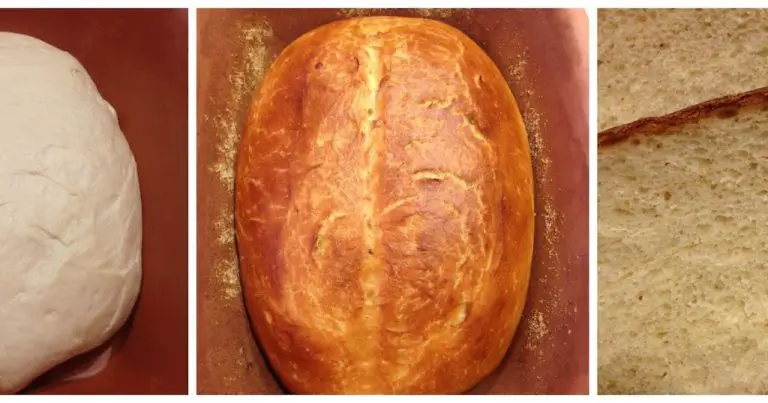How Do You Make An Eco-Friendly Ganesh Idol?
Ganesh Chaturthi is one of the most popular Hindu festivals that celebrates the birth of Lord Ganesha. Millions of devotees welcome Lord Ganesha into their homes and worship him for 1.5, 3, 5, 7 or 11 days before immersing the idols into water bodies. Traditionally, devotees make idols using plaster of Paris and toxic paints. While the festival fosters a great sense of community and devotion, there is a huge environmental cost. Making idols with plaster of Paris is not eco-friendly as it is not biodegradable. When immersed, these idols don’t dissolve for months and contain toxic chemicals from the paint, which leach into water bodies harming aquatic life. This results in water pollution and environmental damage.
However, we can celebrate an eco-friendly Ganesh Chaturthi and reduce its carbon footprint by making idols with natural materials, following sustainable practices and immersing responsibly. Small changes can make a big difference – we can choose eco-conscious alternatives that honor the festival’s traditions and Lord Ganesha without harming the planet.
Choose the Right Materials
When creating an eco-friendly Ganesha idol, choose materials that are natural, biodegradable, and sustainable. Some great options include:
Clay
Clay is one of the best materials for making eco-friendly idols. Choose natural clay rather than polymer or plaster of Paris. Clay is biodegradable and dissolves fully in water, minimizing harm to the environment. Look for clay that is free of toxic elements like lead.
Paper Mache
Paper mache is lightweight and composed of recycled paper materials. To make paper mache clay, simply mix torn newspapers with all-purpose flour and water to form a dough-like material that you can mold into idol shapes. Avoid harmful chemicals and paints.
Natural Materials
In addition to clay and paper, you can use natural biodegradable materials like coconut fiber, cotton cloth, jute, and natural grains and pulses. These options will deteriorate safely when immersed.
Avoid Plastics
Do not use plastics and synthetics to make your Ganesha idol. Plastics take hundreds of years to decompose, pollute water bodies and harm marine life. Avoid clay polymers, plaster of Paris and shiny decorative items.
Make the Clay Idol
Making an eco-friendly Ganesh idol out of clay is a great way to celebrate Ganesh Chaturthi sustainably. Here are step-by-step instructions for sculpting your own clay Ganpati:
Step 1: Choose natural clay without any chemical additives. Pottery clay, red clay, or modeling clay are good options.
Step 2: Knead the clay thoroughly to remove any air bubbles and make it soft and malleable. Sprinkle some water if the clay is too dry.
Step 3: Make Ganesh’s basic body shape by rolling clay into balls of different sizes and stacking them. The bottom ball should be the biggest for stability.
Step 4: Use clay sculpting tools to refine the shape and add details. Make the head, ears, trunk, arms, legs, etc. Attach carefully by wetting the clay interfaces.
Step 5: Use toothpicks, chopsticks, etc. to add finer details like ornaments, clothes, and facial features. Work slowly and carefully.
Step 6: Allow the idol to air dry completely. Turn periodically to ensure even drying. Drying time depends on climate and idol size.
Step 7: (Optional) Apply natural paints made from turmeric, flower extracts, etc. to add color once fully dried.
Create a Paper Mache Idol
Paper mache is a fun, eco-friendly technique to create your Ganesh idol. Here are the steps:
Start by blowing up a balloon to the size you want your idol. Tie off the end and set it aside.
In a large bowl or bucket, mix together water, flour, and a little salt. The consistency should be like a thin pancake batter.
Tear newspaper, paper towels, or other recyclable paper into strips. Dip the strips into the flour mixture, removing any excess. Smooth the wet strips over the balloon shape.
Apply at least 3 layers, allowing each layer to dry before adding the next. To speed up drying, use a hairdryer on a cool setting.
Once the paper mache has dried and hardened, use a pin to pop the balloon inside. Your idol shape will be hollow.
You can now paint or decorate the idol as desired. Make sure to use non-toxic eco-friendly paints and materials.
Decorate Sustainably
When decorating your eco-friendly Ganesh idol, avoid chemical paints and go for natural materials instead. Here are some ideas for sustainable decorations:
Use natural dyes made from turmeric, hibiscus flowers, beets, spinach, tea, coffee and other plants to color the idol. Boil or soak the plant material to extract the dye. This avoids toxins found in synthetic dyes.
Decorate with fresh flowers like marigolds or leaves. Opt for flowers and leaves that are in season locally to minimize your carbon footprint.
Embellish with seeds, nuts, beans or lentils to create patterns and designs. Materials like chickpeas, chana dal, rice and coconut flakes add visual interest in place of glitter, beads and other plastics.
Upcycle old saris, fabrics, ribbons or rags into decorative elements. Cut them into shapes or string them together as flags or garlands.
Avoid any decorations that will be immersed into waterways along with the idol. Stick to biodegradable materials only.
Perform the Pooja
The Ganesh Chaturthi pooja is the ritual worship performed to honor Lord Ganesha. Here are some tips for performing an eco-friendly pooja:
Use natural materials for the pooja like flowers, fruits, and leaves instead of plastic and artificial flowers. Opt for minimal or reusable decorations. You can make flower garlands from marigolds or jasmine.
Light diyas using renewable sources like olive oil or ghee instead of paraffin wax. Avoid lighting too many diyas to reduce smoke and heat.
Offer Lord Ganesha his favorite foods like modaks, ladhus, or fruits. Avoid plastic-packaged or processed foods. Distribute prasad in reusable containers or leaf bowls.
Chant the traditional Ganesh prayers and aarti. Explain the meaning and importance of the rituals to children to pass on traditions.
After the pooja, sprinkle the idol with water and flowers instead of chemical colors or dyes. Offer a garland and ask for blessings to reduce pollution.
Conclude the pooja by offering thanks for the blessings bestowed. Raise awareness on eco-friendly practices when inviting others to participate in the pooja.
Immerse Responsibly
When immersing idols in water bodies, it’s important to do so in an eco-friendly manner to avoid water pollution. Here are some tips for responsible immersion:
- Avoid using chemical paints, toxic materials and plastics to decorate the idol. These can pollute water when immersed.
- Use natural, biodegradable materials like turmeric, vermilion, flowers and leaves to adorn the idol.
- Do not immerse idols in rivers, lakes or the ocean. Opt for temporary water bodies or mobile immersion tanks.
- Make sure any non-biodegradable ornamentation is removed before immersion to prevent plastic pollution.
- Only immerse small idols at home using a bucket. Larger idols should be immersed at designated immersion sites.
- Never dump idol remains on river banks or in fields. Make sure the idol is fully immersed.
- Consider symbolic immersion by dissolving the idol in a bucket at home and using the water to nourish plants.
- Support and participate in idol collection and recycling initiatives in your community.
- Sensitize your family, friends and neighbors about the need for eco-friendly Ganpati celebrations.
With some mindful practices, we can continue the Ganpati festivities in an environmentally responsible way and prevent pollution of our precious water resources.
Reuse the Idol
Instead of immersing the idol, consider repurposing it so that it can be used year after year. This reduces waste and teaches about sustainability. Here are some creative ways to reuse your eco-friendly Ganesh idol:
Turn it into a garden decoration or statue. Place the idol in your garden or courtyard as a permanent fixture. This will add character and meaning to your outdoor space.
Use it as a decorative showpiece indoors. Find a shelf or tabletop to display your Ganesh idol inside your home. Let it be a daily reminder of this festive time.
Craft it into jewelry or trinkets. You can reuse the clay or plaster idol to make small pendants, beads, or figurines. These make great gifts or mementos.
Donate to a community center or school. Consider gifting your idol to be displayed permanently at a community gathering space, library, or school.
Upcycle it into a bird feeder or bath. Turn the idol into a functional decoration for your garden that will attract birds.
Get creative and find other ways to repurpose your idol so it continues to spread joy and meaning for years to come.
Organize a Green Event
When organizing a community Ganesh Chaturthi event, there are many ways to make it more eco-friendly. Here are some tips:
Choose a location that will minimize damage to the local environment. Avoid holding the event near bodies of water where immersion could pollute. Select an open ground area that will not harm tree roots or wildlife.
Provide clearly labeled bins for recycling and composting waste during the event. Encourage participants to bring reusable plates, cups, and utensils to reduce plastic usage.
Set up a pond with natural clay bottom for idol immersion. Reuse this in following years. Avoid immersing idols in local lakes or oceans.
Organize idol making workshops using natural materials like clay, papier mâché and organic paints. Demonstrate techniques for making eco-friendly idols.
Provide information to attendees on sustainable practices for celebrating Ganpati. Share tips on making clay idols, reducing waste and responsible immersion.
Partner with environmental organizations to implement and promote green initiatives around the event. This sends a powerful message.
Consider organizing idol collection after the festival to send clay idols for recycling rather than immersion. Upcycle decorations and flowers next year.
Promote eco-friendly practices on social media and with signage at your event. Inspire more groups to celebrate the festival sustainably.
Spread the Word
An important part of making eco-friendly Ganesh idols is encouraging others to adopt sustainable practices as well. There are many ways you can spread awareness and inspire more people to go green for Ganesh Chaturthi:
– Talk to your family, friends, neighbors, and colleagues about trying eco-friendly idols this year. Explain the benefits for the environment and provide tips on how to make them. Offer to make some idols together.
– Share photos and videos on social media of your green Ganpati celebrations. This shows others that sustainable idols are beautiful, meaningful, and possible. Use relevant hashtags to spread the message further.
– Organize workshops in your community to demonstrate eco-friendly idol making. Teach children and get them excited about the creativity and care involved.
– Put up posters and distribute leaflets with information on going green for Ganesh Chaturthi. The more people see the message, the wider the impact.
– Write blog posts, articles, or letters to local publications highlighting the environmental significance of the festival and easy ways to make it greener. Share your own experiences.
– Reach out to temple organizers and idol makers encouraging them to provide and promote eco-options. Your voice can influence their practices.
– Speak to local officials and councils about supporting environmental initiatives around Ganesh Chaturthi. There may be funding or resources they can provide.



